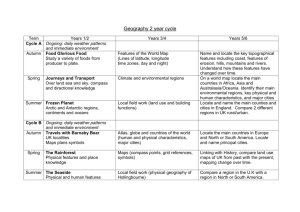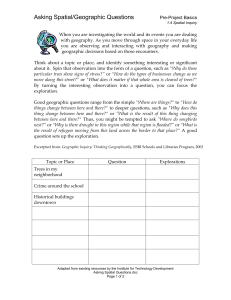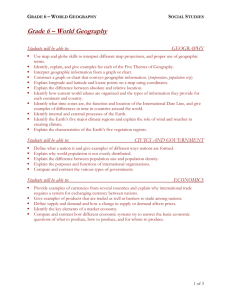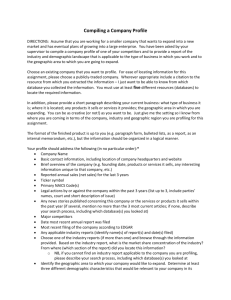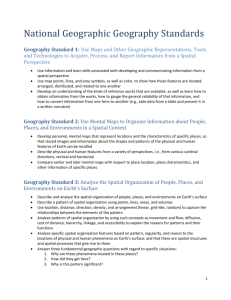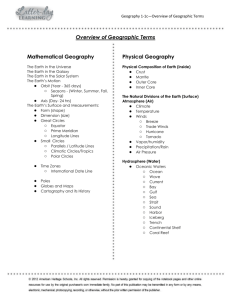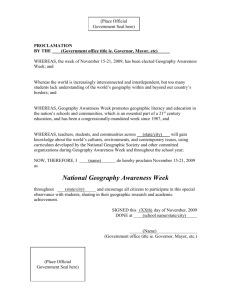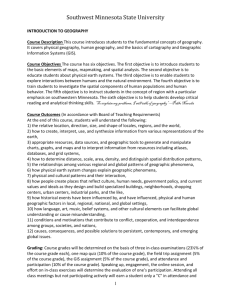File - Ford`s Social Science
advertisement
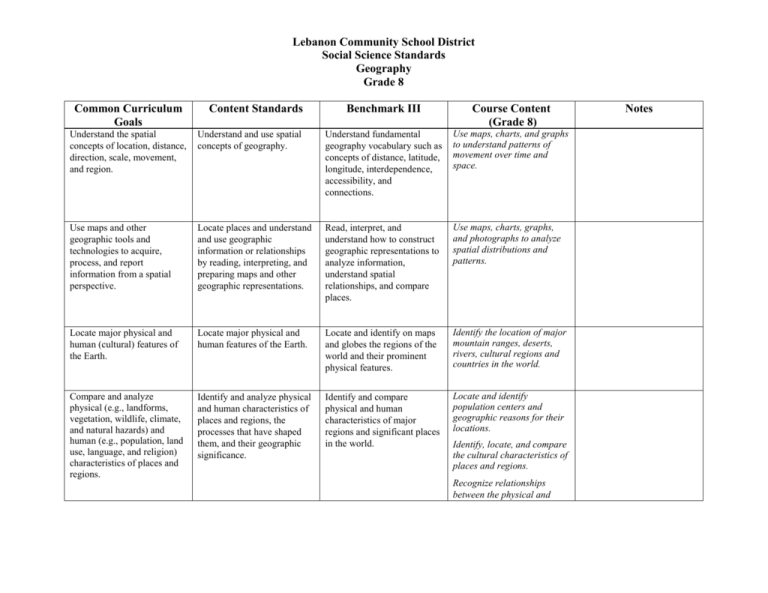
Lebanon Community School District Social Science Standards Geography Grade 8 Common Curriculum Goals Content Standards Benchmark III Course Content (Grade 8) Understand the spatial concepts of location, distance, direction, scale, movement, and region. Understand and use spatial concepts of geography. Understand fundamental geography vocabulary such as concepts of distance, latitude, longitude, interdependence, accessibility, and connections. Use maps, charts, and graphs to understand patterns of movement over time and space. Use maps and other geographic tools and technologies to acquire, process, and report information from a spatial perspective. Locate places and understand and use geographic information or relationships by reading, interpreting, and preparing maps and other geographic representations. Read, interpret, and understand how to construct geographic representations to analyze information, understand spatial relationships, and compare places. Use maps, charts, graphs, and photographs to analyze spatial distributions and patterns. Locate major physical and human (cultural) features of the Earth. Locate major physical and human features of the Earth. Locate and identify on maps and globes the regions of the world and their prominent physical features. Identify the location of major mountain ranges, deserts, rivers, cultural regions and countries in the world. Compare and analyze physical (e.g., landforms, vegetation, wildlife, climate, and natural hazards) and human (e.g., population, land use, language, and religion) characteristics of places and regions. Identify and analyze physical and human characteristics of places and regions, the processes that have shaped them, and their geographic significance. Identify and compare physical and human characteristics of major regions and significant places in the world. Locate and identify population centers and geographic reasons for their locations. Identify, locate, and compare the cultural characteristics of places and regions. Recognize relationships between the physical and Notes Lebanon Community School District Social Science Standards Geography Grade 8 Common Curriculum Goals Content Standards Benchmark III Course Content (Grade 8) cultural characteristics of a place or region. Identify and understand worldwide patterns of population distribution, migration, and cultural diffusion and interactions. Identify patterns of population distribution and infer causes. Analyze the causes of human migration (e.g., density, food and water supply, transportation and communication systems) and its effects (e.g., impact on physical and human systems). Understand the distribution and movement of people, ideas, and products. Understand economic, cultural, and environmental factors that influence changes in population, and evaluate the consequences of the resulting increases or decreases in population. Understand, analyze and evaluate the consequences of population changes resulting from economic, cultural, or environmental factors. Identify economic, cultural, and environmental factors that affect population, and predict how the population would change as a result. Identify and give examples of economic, cultural, and environmental factors that influence population. Understand how people and the environment are interrelated. Understand how humans affect the physical environment. Understand how human modification of the physical environment in a place affects both that place and other places. Understand how clearing vegetation affects the physical environment of a place and other places. Understand how physical Understand how changes in a Understand how changes in Recognize and identify patterns of migration streams in U.S. history. Understand how migration streams affect the spread of cultural traits. Predict the affect of a given economic, cultural, or environmental change on a population. Notes Lebanon Community School District Social Science Standards Geography Grade 8 Common Curriculum Goals Content Standards characteristics in the environment and changes in the environment affect human activities. Benchmark III physical environment affect human activity. Course Content (Grade 8) the physical environment can increase or diminish capacity to support human activity. Predict how changes in an ecosystem (not caused by human activity) might influence human activity. Notes


